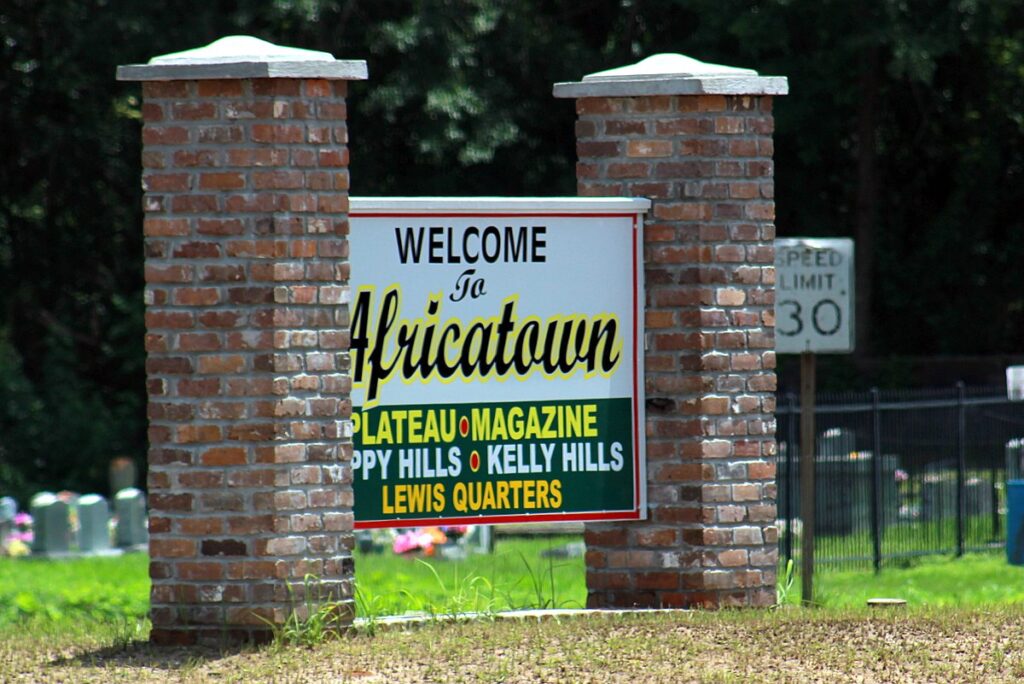Mothers & Others For Clean Air deeply believes that access to clean air is an inherent human right. We acknowledge that communities of color often suffer from an unequal burden of toxic pollution. We offer the following resource to advance education and dialogue about Environmental Racism within the state of Alabama. This is not a comprehensive list of issues, leaders, or organizations within Alabama. Rather, this post highlights a few issues and resources, and thus encourages continued awareness and involvement with issues of environmental racism in Alabama. We welcome anyone to share additional resources or thoughts with us.

What does Environmental Racism Look Like in Alabama?
Africatown Pollution Mobile: Africatown is a community located three miles north of downtown Mobile. The community was formed by Africans who were on the last known illegal shipment of slaves to the United States in 1860*. The town is known for the unique African culture preserved and cultivated there. However, in the 1940’s, many industrial factories, primarily paper mills, moved into the area and threatened the way of life for Africatown’s residents. Pollution from the papermill industry is rampant. Common pollutants emitted from the paper mills are nitrogen dioxide, sulfur oxide, carbon monoxide, mercury, and benzene. The chemicals emitted from the plants cause a consistent foul odor in Africatown, and the pollution released from the facilities corrodes roofs and cars in the area. Adults in the town live, on average, to only age 65. Many residents suffer lung disease and cancers. The pollution and resulting health disparities has driven down the town’s population from 15,000 in 1940 to only 2,000 people today[i]. As residents leave, the unique culture facilitated in this town has slipped away.
*Despite the Altantic Slave trade being banned in 1807, 110 enslaved Africans were taken from their homes (most likely from the interior of present day Nigeria). They were held captive in the Kingdom of Dahomey until they were smuggled onto the ship Clotilda. They were taken to just outside of Mobile, Alabama. Most of the slaves were sent to work on plantations near Mobile. After emancipation (1863-1865), 32 of the formerly enslaved persons set up Africatown[ii].
Coal Ash in Uniontown: Uniontown in a small city of around 2,300 people that is located in central Alabama. The average per capita income in the city is less than $10,000 a year, and approximately 90% of Uniontown’s population is Black. In 2007, the Alabama Department of Environmental Management began to seek a permit to put a landfill in the city. The permit process continued despite petitions against the landfill by local residents and the Arrowhead Landfill was built. In 2008, a dike broke at a coal ash pond in Kingston, Tennessee. The area was declared a superfund site and the coal ash left behind was considered highly hazardous. In 2010, the EPA approved the decision to dispose of the coal ash from the Kingston spill to the Arrowhead Landfill in Uniontown. The ash that was considered too dangerous to remain in the environment and in the communities in Tennessee, was then dumped on the primarily Black town in Alabama. Coal ash contains toxic metals such as arsenic, mercury, and lead. Exposure to coal ash is connected with leukemia, brain cancer, and lung cancer[i].
BIPOC Scientists, Academics, Lawyers, and Researchers Working on Environmental or Health Racism
There are many scientists, academics and researchers working to change the course of environmental and health racism in the state of Alabama. The professionals highlighted below are all people of color. We offer their names as a gateway for individual or organizational research. We recognize that there are many incredible researchers whose names are not on this list. We welcome anyone to share additional names with us.
Dr. Shauntice Allen: University of Alabama at Birmingham; Department of Environmental Health Sciences. Her research program has a strong prevention focus at both the individual and community levels where she explores the inextricable link between environmental exposures, race and place.
To Get Involved with Environmental Racism Advocacy in Alabama Follow & Consider Donating To…
“We are a faith-based group of public theologians from various faith traditions who operate at the intersectionality of justice through interdisciplinary methods.We engage and equip communities with tools to build power from the grassroots up and to fight for justice at the policy level.”
Alabama Interfaith Power & Light
“The mission of Alabama Interfaith Power & Light (IPL) is to be faithful stewards of Creation by responding to Climate Change through the promotion of environmental justice, energy conservation, energy efficiency, and renewable energy from a faith perspective.”
[i] Pennington, M., & Ph.D, S. C. (2016). Unconventional Wisdom. University of Montevallo TRIO McNair Scholars Program 2016 Research Journal. https://www.montevallo.edu/wp-content/uploads/2018/09/journal-2016-complete.pdf#page=186
[ii] https://www.history.com/news/slaves-clotilda-ship-built-africatown




